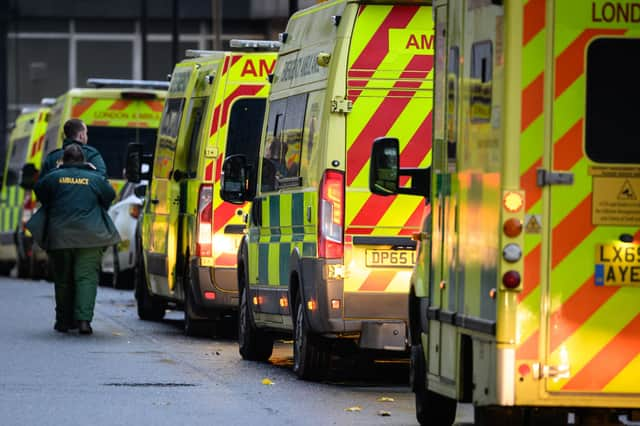Why are NHS Emergency Departments under so much pressure? – 4 problems they’re currently facing
The Emergency Departments (ED) of the NHS play a vital role in providing urgent medical care to the public. However, particularly in recent times, these departments have been under tremendous pressure.
In this article, we’ll explore four significant problems currently facing NHS ED departments that are contributing to the increased pressure.

Image: Getty Images
Rising patient demand
It might sound obvious, but one of the most significant challenges faced by NHS ED departments is the increasing demand for their services.
The number of patients seeking urgent care has been steadily rising, driven by various factors such as an ageing population, complex health needs, and limited access to primary care services during out-of-hours periods. This surge in demand strains ED resources, making it difficult for healthcare professionals to provide timely care to every patient.
In 2019/20 there were 25.0 million attendances at A&E, compared to 21.5 million attendances in 2011/121
Staffing shortages
A critical factor which is exacerbating the pressure right across the Health and Social Care departments is the shortage of skilled healthcare professionals. This is particularly true in Emergency Departments, where due to the stressful and high-pressure nature of the environment, staff turnover is among the highest.
This shortage of staff not only affects the quality of care and how quickly patients can be seen, but also places existing staff under immense stress, leading to burnout and decreased morale.
The latest NHS vacancy statistics from NHS Digital found that the total number of vacancies in September 2022 was 133,446, a vacancy rate of 9.7%. This represented an increase from the previous year when the number of vacancies was 103,809 and the vacancy rate was 7.9%2.
Almost all respondents who replied to a recent NHS Providers survey said that staff shortages are having a serious and detrimental impact on services and will hinder efforts to deal with those major care backlogs3.
Delayed discharges & bed-blocking
The problem of delayed discharges, often referred to as “bed-blocking”, is a major issue in the NHS and has a direct effect on emergency departments.
When patients can’t be discharged from hospitals due to insufficient provision of community care or social services, it creates a bottleneck in the system. NHS England data for the month of October 2022 shows just 39.9% of patients were discharged when they were medically ready to be, with over 13,000 beds on an average day occupied by patients who could have been discharged4
This reduces the availability of beds for new ED admissions, leading to overcrowding and increased waiting times for patients in need of immediate care.
Inappropriate ED utilisation
Another issue the NHS is facing is that many individuals seek care in NHS emergency departments for non-urgent issues that could be managed through primary care or community services.
This inappropriate utilization of ED contributes to overcrowding, longer waiting times, and untimely care for patients with genuine emergencies. Addressing this issue requires public education campaigns and improved access to alternative healthcare options.
Conclusion
The pressure on NHS ED departments is a challenge that arises from a combination of factors, and addressing these problems will require a comprehensive and collaborative approach across providers in NHS and Social Care. Initiatives that have a direct impact on the number of patients attending ED, for example implementing virtual wards and enabling care homes and communities to respond to minor and non-injury falls, should be encouraged and supported.
By recognizing these issues and working collectively to find solutions, we can help alleviate the strain on NHS Emergency Departments and ensure that urgent medical care remains accessible and effective for all who need it.
Citations
[1] https://www.kingsfund.org.uk/projects/urgent-emergency-care/urgent-and-emergency-care-mythbusters
[2] https://digital.nhs.uk/data-and-information/publications/statistical/nhs-vacancies-survey/april-2015—june-2022-experimental-statistics
[3] https://www.bmj.com/content/377/bmj.o945
[4] https://www.nhsconfed.org/articles/social-care-patient-flow-and-elective-backlog
Related articles
What’s causing NHS ambulance handover delays? Current ambulance handover times explained
What are the benefits of early mobilisation in ICU and Hospitals?
How do patient stretchers improve efficiency and patient flow in hospitals?
Get in touch
Got a question or want to send us a message? Let’s talk.